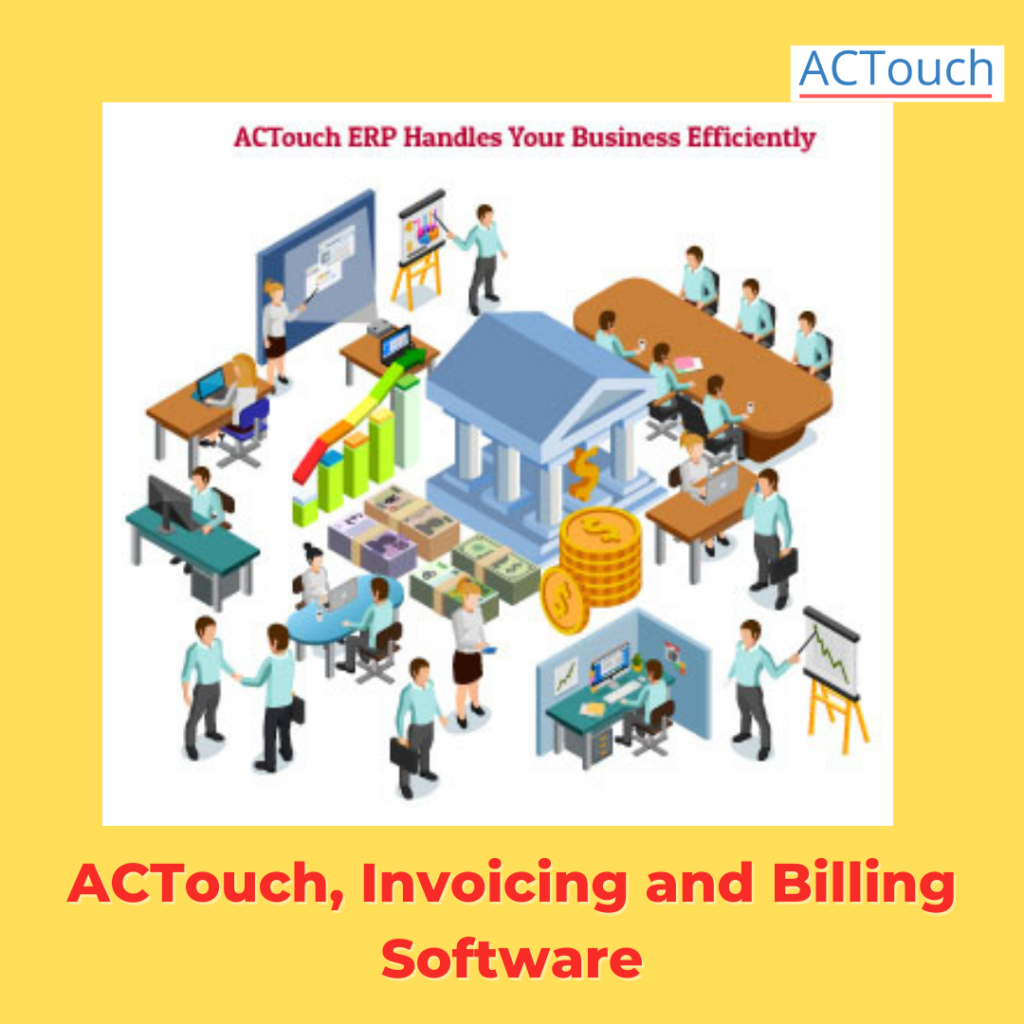Point of Sales: Revolutionising Retail Businesses
What is Point of Sales (POS)?
Point of Sales (POS) refers to the system and software used by businesses, particularly in the manufacturing sector, to manage and facilitate sales transactions. It encompasses the hardware, software, and processes that enable businesses to process sales, track inventory, and generate reports.
POS systems are commonly found in retail environments, where they are used at the point of purchase to process payments, put money into cash drawers and record sales data. However, POS systems have also become an integral part of manufacturing businesses, allowing them to streamline their sales processes, improve customer experience, and gain valuable insights into their operations.
POS Systems and ERP Software have a common factor where the backend system to manage the transaction data are same. However interface on which the User works is different. Its designed to work on Speed and Quick.
For example, a manufacturing company that produces and sells electronic devices may utilize a POS system to manage sales in their physical stores, track inventory levels, and generate reports on the best-selling products. This enables them to make informed decisions about inventory management, marketing strategies, and overall business growth.
Few POS have the facility to manage loyalty program and give Customers to adjust these Loyalty points towards a cash payments. These systems have a real time integration with customer relationship management tool as well as inventory management too. As the Purchase transaction completes, these transaction details are messaged to customer mobile and add these details to customer loyalty programs too.
Earlier payments system had an option with card readers integrated to read debit cards, credit cards, Gift cards with voucher nos. etc. Now they have moved into cloud based POS systems with an access to POS terminal over a mobile device and customer can pay from their mobile device. No more POS Sale systems with card readers etc as it saves so much time for Seller.
Restaurant owners doesn’t want to invest into old POS sale devices and want to go with new Tablets with touch screens that has POS Software. This helps to move the POS to customer table to close the deal and collect the payments either through contactless payments or card payments or use debit cards to receive money.

Why Point of Sales is important for Business?
Implementing a Point of Sales system in a manufacturing business offers several key benefits that can significantly impact its success:
Enhanced Efficiency
POS systems automate various sales processes, reducing the need for manual calculations, paperwork, and repetitive tasks. This enables employees to focus more on providing quality customer service and other value-added activities.
Accurate Inventory Management
By integrating with inventory management systems, POS software helps businesses maintain real-time visibility into stock levels. It tracks sales and automatically updates inventory data, minimizing the risk of overselling or running out of stock. This ensures that manufacturing businesses can meet customer demands promptly and avoid potential losses.
Streamlined Sales Processes
Point of Sales Systems simplify the entire sales process, from order placement to payment processing. They provide a centralized platform for managing sales, tracking orders, and generating invoices, eliminating the need for separate systems and manual data entry. This streamlines operations, saves time, and reduces errors.
Improved Customer Experience
Point of Sales Systems facilitate faster and more efficient transactions, reducing waiting times for customers. Additionally, they enable businesses to store customer data, including purchase history and preferences. This allows for personalized interactions, targeted promotions, and enhanced customer loyalty.
Data-driven Insights
POS software generates comprehensive reports and analytics on sales performance, inventory turnover, and customer behavior. These insights empower manufacturing businesses to make informed decisions, identify trends, optimize pricing strategies, and tailor marketing campaigns to their target audience.
How to enable Point of Sales software?
Enabling Point of Sales software in a manufacturing business involves the following steps:
a. Research and Selection: Start by researching different POS software providers that cater specifically to the manufacturing industry. Look for features such as inventory management, sales tracking, and integration capabilities. Read reviews, compare prices, and choose a solution that aligns with your business requirements.
b. Hardware Setup: Depending on your needs, you may need to invest in hardware such as barcode scanners, cash registers, receipt printers, and touch screen monitors. Ensure compatibility between the chosen POS software and the hardware components you intend to use.
c. Software Installation: Once you have the necessary hardware, follow the software provider’s instructions to install the POS software on your designated devices. This may involve downloading and running installation files or setting up cloud-based solutions.
d. Configuration and Setup: After installation, configure the software according to your business needs. This includes adding product details, pricing information, and setting up tax rates. Ensure that the system is synchronized with your inventory management system, if applicable.
e. Staff Training: Conduct comprehensive training sessions for your employees to familiarize them with the POS software. Ensure they understand how to process transactions, generate reports, and utilize the system’s features effectively. Ongoing support and refresher training may be necessary as new updates or features are introduced.
f. Testing and Integration: Perform thorough testing to ensure the POS system functions smoothly and integrates seamlessly with your existing processes. Conduct trial transactions, reconcile inventory data, and verify the accuracy of reports generated by the system.
g. Data Migration: If you are transitioning from an existing system, ensure a smooth transfer of data to the new POS software. Collaborate with the software provider to migrate important information such as product catalogs, customer databases, and sales history.
|
How Point of Sales works? Give examples.
Point of Sales systems typically follow a standardized workflow that varies slightly based on the software and specific business requirements. Here is a general overview of how POS works in a manufacturing business:
a. Product Selection: When a customer visits a store or interacts with an online platform, the POS system allows them to browse through available products and select the desired items. The system provides detailed information such as pricing, specifications, and availability.
b. Order Placement: Once the customer selects the products they wish to purchase, the POS system allows them to add the items to their cart or initiate the order. It calculates the total amount, including any applicable taxes or discounts, and generates an invoice or order summary.
c. Payment Processing: The customer proceeds to the payment stage, where the POS system offers various payment options such as cash, credit cards, or mobile payment solutions. It securely processes the payment, verifies its success, and issues a receipt to the customer.
d. Inventory Update: Simultaneously, the POS system updates the inventory database in real-time. It deducts the sold items from the available stock, ensuring accurate inventory management and preventing overselling.
e. Reporting and Analytics: POS software generates comprehensive reports on various aspects of the business, such as daily sales, popular products, and customer behavior. These reports provide valuable insights that help businesses make data-driven decisions, optimize operations, and drive growth.
For example, let’s consider a Retail business that specialises in custom-made furniture.
They implement a POS system to manage their showroom sales. When a customer visits the showroom and selects a piece of furniture, the sales representative uses the POS system to generate an order, calculate the total price, and process the payment. The system updates the inventory, ensuring the availability of accurate stock levels. The business can then analyze sales data and customer preferences through the POS reports to optimize their product offerings and marketing strategies.
Point of Sales Systems play a crucial role in the success of manufacturing businesses. They streamline sales processes, enhance efficiency, improve inventory management, and provide valuable insights. By embracing POS technology, manufacturers can elevate their operations, deliver exceptional customer experiences, and unlock the full potential of their business.

